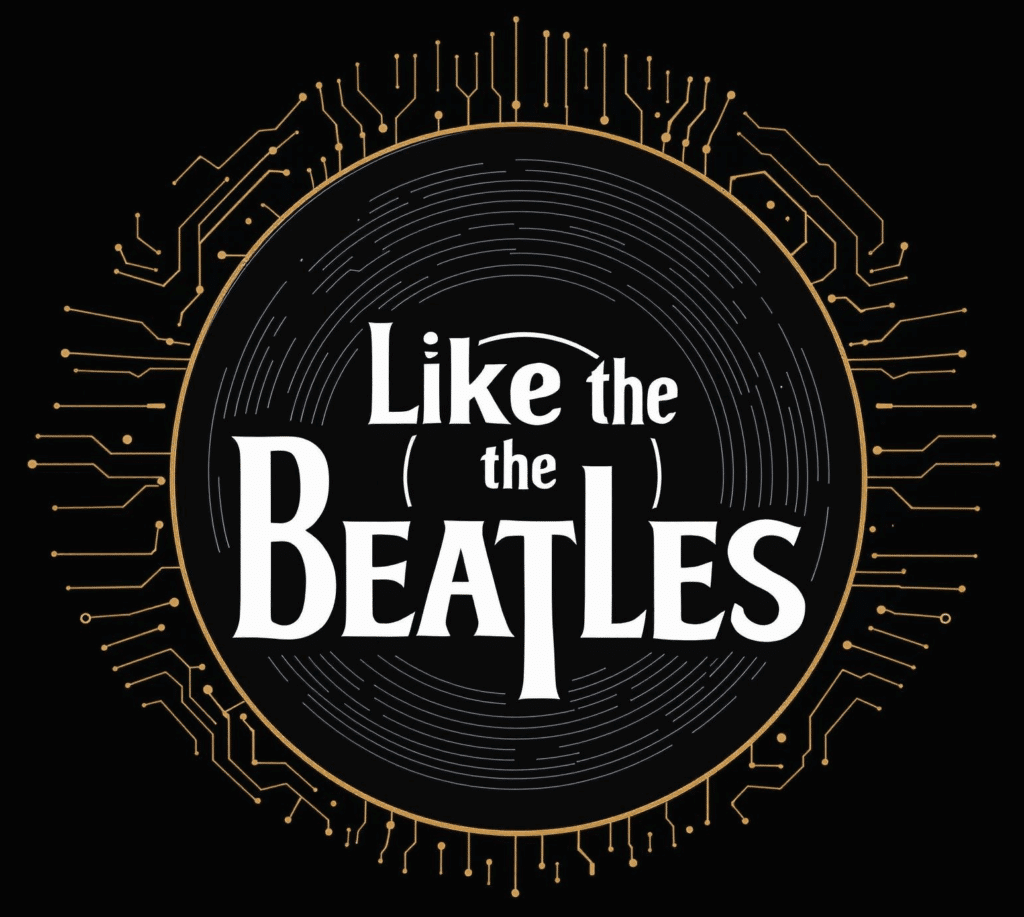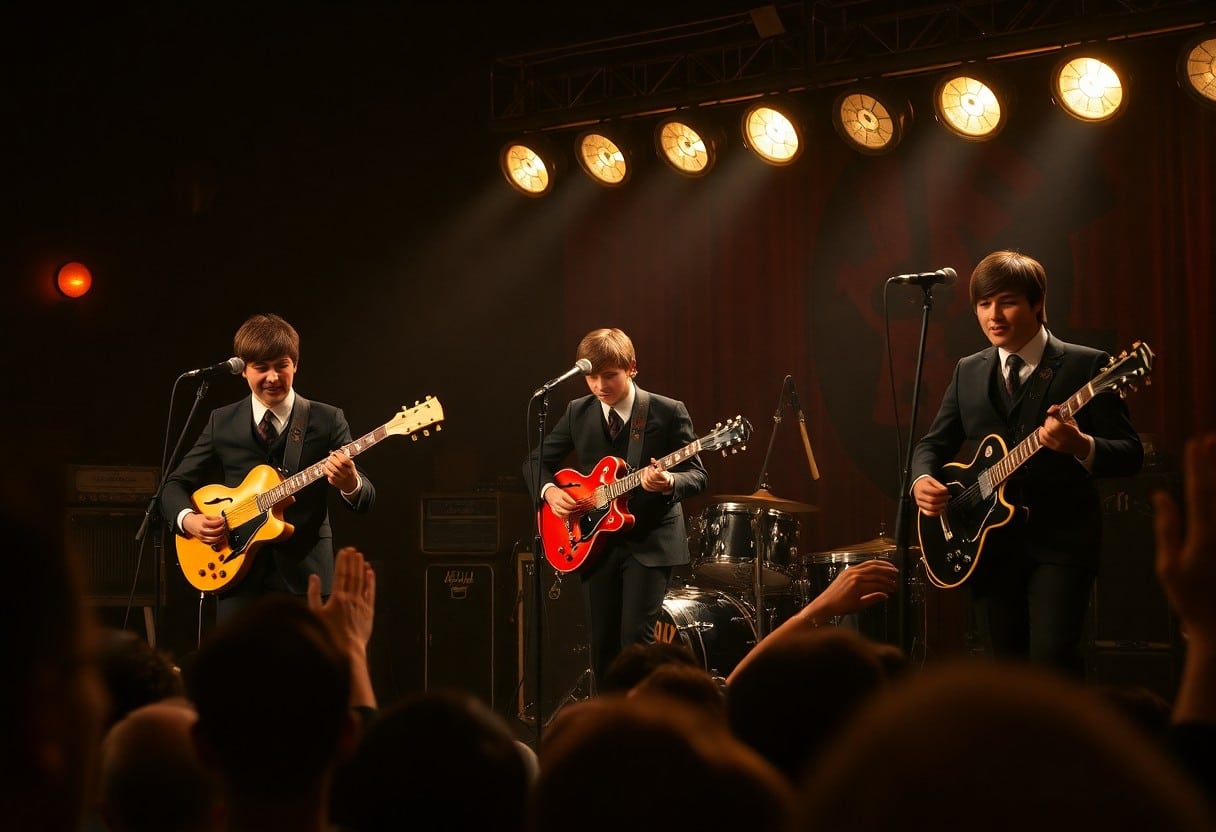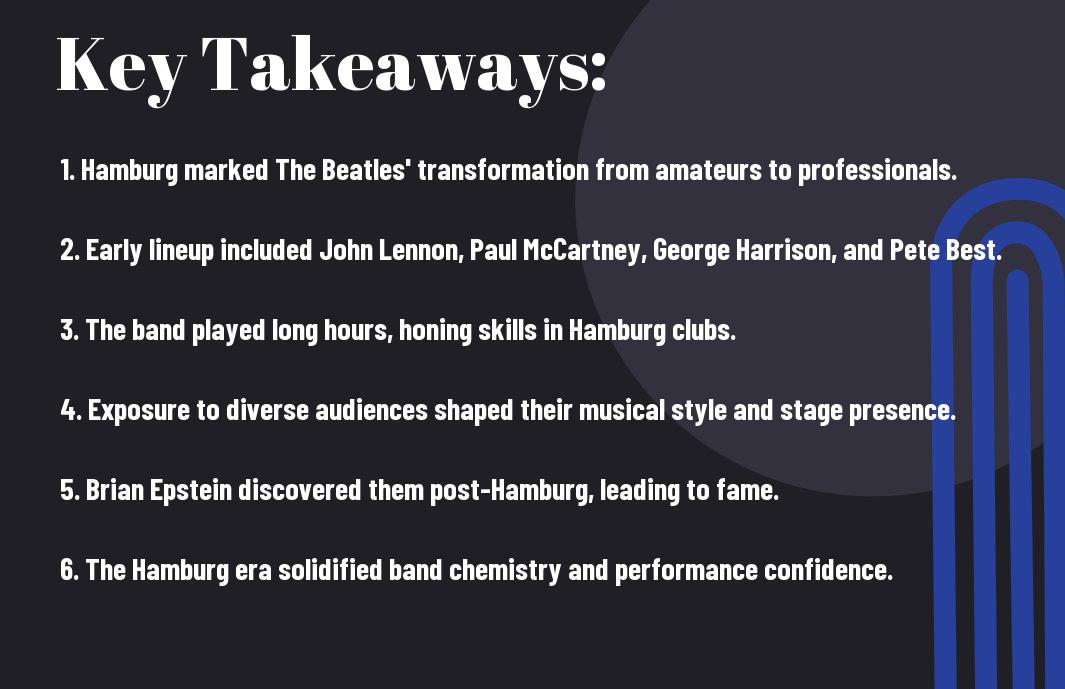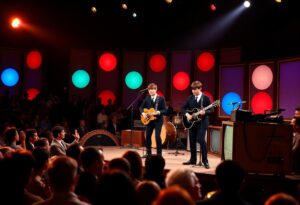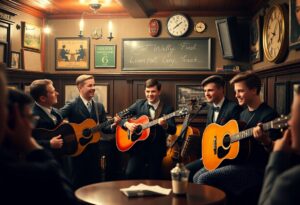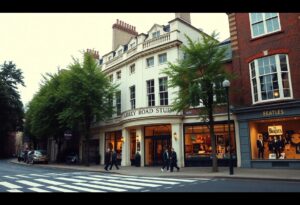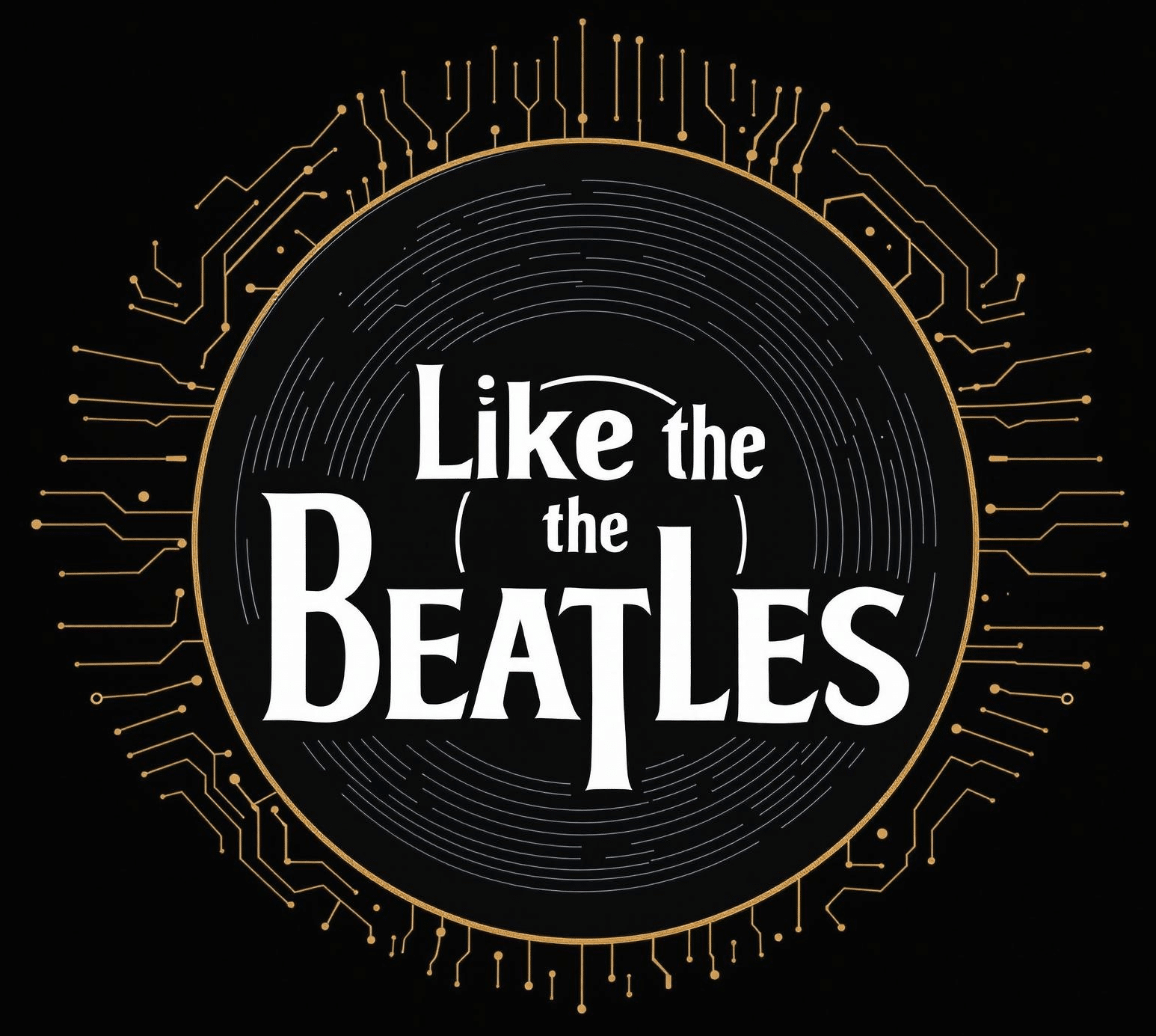Lineup changes can define the essence of a band, and when it comes to The Beatles, their time in Hamburg was pivotal in shaping their original sound and identity. I want to take you on a journey through this transformative period, highlighting key moments that not only solidified their musical partnerships but also exposed them to the gritty realities of performing. By delving into their early gigs and experiences, you’ll gain a deeper appreciation for the foundation that paved the way for their legendary status.
The Early Years in Hamburg
While their fame came later, the Beatles’ formative years in Hamburg were instrumental in shaping their musical identity. This gritty city served as the backdrop for their relentless performances, honing their skills and molding them into a cohesive band. The late-night gigs in smoky clubs not only tested their endurance but also solidified their commitment to their craft, laying the groundwork for their future success.
Initial Band Formation
Around 1960, the Beatles consisted of John Lennon, Paul McCartney, George Harrison, and drummer Pete Best. This lineup was solidified after the original group, The Quarrymen, transformed through a series of lineup changes. Hamburg became their training ground, allowing them to experiment with sound and develop their act, setting the stage for what was to come.
Key Influences and Inspirations
Along the way, the Beatles drew inspiration from a variety of sources that enriched their musical experience. Their exposure to American rock and roll, rhythm and blues, and the vibrant energy of Hamburg’s music scene fueled their creativity.
Initial encounters with artists like Chuck Berry, Elvis Presley, and Little Richard introduced the Beatles to new styles and rhythms. Their immersion in Hamburg’s nightlife also allowed them to perform alongside local bands, enhancing their improvisation skills. The eclectic mix of music and culture they experienced formed a solid foundation, igniting their passion and ultimately influencing their songwriting and sound as they evolved into one of the most iconic bands in history.
The Cavern Club and Beyond
You can’t discuss The Beatles’ evolution without mentioning their iconic performances at The Cavern Club. This legendary venue became their home base in Liverpool, showcasing their raw energy and infectious charisma. The intimate setting allowed them to connect deeply with their audience while honing their craft, leading to an explosive local following that laid the groundwork for their future success.
Gigs That Shaped Their Sound
That era of relentless gigging in various venues played a significant role in shaping The Beatles’ musical style. Each performance allowed them to experiment with different genres, from rock ‘n’ roll to skiffle, ultimately creating a unique sound that resonated with audiences.
The Emergence of Their Identity
Above all, The Beatles’ early gigs were instrumental in establishing their artistic identity. Their experiences on stage forged a strong sense of individuality and creativity, setting them apart from other bands.
Due to the intense atmosphere of live performances and the fierce competition among local acts, The Beatles started to refine their sound and style. Imitating and innovating became second nature as they drew inspiration from American rock legends while developing their *distinct* vocal harmonies. The camaraderie they built during this time fostered a sense of division and unity that ultimately contributed to their lasting legacy. As they polished their craft, the emergence of their identity was not just a transformation of sound, but a fusion of personalities and cultural influences that would resonate worldwide.
Member Interactions and Dynamics
Many aspects of The Beatles’ camaraderie during their Hamburg days shaped their eventual success. Their interactions were marked by a blend of humor, rivalry, and deep friendship, which allowed them to grow both as individuals and as a band. Understanding these dynamics is imperative for anyone looking to grasp the essence of their original lineup.
The Roles Within the Band
One of the fascinating elements of The Beatles was the distinct roles each member played. John Lennon’s sharp wit and boldness complemented Paul McCartney’s melodic sensibility, while George Harrison introduced a unique sound and perspective, and Ringo Starr brought rhythm and levity to the group. These roles were not static; they shifted as their music evolved.
Creative Collaborations
Above all, the Hamburg era was a fertile ground for exploration and experimentation. The members often wrote songs collaboratively, which not only honed their skills but also fostered a sense of unity.
Consequently, their creative collaborations led to the emergence of styles that would define their legacy. The interplay of John and Paul’s songwriting synergy, alongside George’s innovative guitar work, contributed to an electric atmosphere where ideas flourished. It was during this period that you could feel the palpable excitement in their music-making, resulting in tracks that showcased their unique talents while carving out a distinct sound. Their relationship dynamics were carefully balanced, allowing for genuine individuality to shine within collaborative efforts, demonstrating that their greatest strength lay in their ability to work together.
Milestones and Recordings
After exploring the Beatles’ Hamburg era, it becomes clear that this period was foundational to their development. Where did The Beatles live during their Hamburg period? served as a backdrop for many crucial milestones in their career, including their first recordings and electrifying performances that solidified their reputation and helped to shape their sound.
First Recordings and Significance
Milestones such as their initial recordings in Hamburg set the stage for their future success. These sessions helped the band hone their craft and create a unique sound, merging rock and roll with their distinct flavor that would soon captivate the world.
Notable Live Performances
After riveting audiences in Hamburg, the Beatles’ live performances became legendary experiences. Each show was marked by their contagious energy and growing fanbase, ultimately leading to a frenzied environment that was both exhilarating and unpredictable.
Indeed, the Beatles mesmerized crowds not only with their music but also with their charismatic stage presence. Dangerous moments, such as being mobbed by fans, highlighted their intense popularity, while positive experiences like their reception at the Star-Club boosted their confidence. These performances were instrumental in forging their identity, setting the stage for their forthcoming global stardom.
Transition to Fame
Keep in mind that The Beatles’ journey from obscurity to stardom was a carefully crafted evolution, shaped significantly during their early years in Hamburg. This bustling German city provided them with a platform to refine their sound and performance style, paving the way for their imminent fame in the UK and beyond.
The Turning Point: Return to Liverpool
Behind their return to Liverpool in 1961, a sense of transformation was brewing. The band didn’t just come back as local musicians; they surged forward with newfound confidence and a wealth of performance experience. With their sights set on greater horizons, they quickly sought appearances at major clubs and events, establishing themselves as a force to be reckoned with.
Early Media Attention and Demos
At this pivotal stage in their career, The Beatles garnered early media attention that played a significant role in shaping their image. Journalists and radio stations began to take notice, enabling them to share their demos with a broader audience. This exposure cultivated an eager fan base, setting the stage for their future success.
Demos from this period highlight the band’s impressive talent and engaging songwriting. These recordings, infused with raw energy and distinct melodies, showcased their potential. Local radio stations, recognizing their appeal, began airing these tracks, which sparked a buzz among fans. This early media attention was instrumental in building momentum for The Beatles, as it not only solidified their place within Liverpool but also opened doors to a wider audience eager for their infectious sound.
Legacy of the Hamburg Era
Your understanding of The Beatles’ legacy must include their formative years in Hamburg, which shaped not only their sound but their identity as a band. This period of intense performance and experimentation laid the groundwork for their later, world-changing success. The experiences they endured during this time helped cultivate their creativity and camaraderie, ultimately defining their musical journey.
Lasting Impact on Music
On a wider scale, the Hamburg era had a profound lasting impact on music, establishing a gritty, energetic live performance style that would influence countless artists. The Beatles not only honed their craft through relentless gigging but also embraced a wide range of musical influences, blending rock, pop, and skiffle, all of which contributed to their innovative sound that captivated audiences around the world.
Influence on Future Generations
To fully grasp The Beatles’ influence, it’s imperative to recognize how their Hamburg experience inspired countless musicians and bands that followed. Their relentless pursuit of performance excellence and bold experimentation encouraged a spirit of creativity that permeates music today.
Considering the immense challenges The Beatles faced while performing in Hamburg, they not only survived but thrived, showcasing their ability to adapt and innovate. This resilience served as a powerful lesson for future generations of artists. Their blend of musical styles and willingness to explore different genres encouraged aspiring musicians to push boundaries, and create diverse sounds. Today, you can hear echoes of their Hamburg-era influences in the work of many contemporary artists, affirming their lasting legacy in the music world.
Final Words
Drawing together the significant moments of The Beatles’ Hamburg era allows you to appreciate their formative years and original lineup fully. By exploring the band’s early performances and the influences that shaped their sound, you can gain insight into their development as artists. I encourage you to probe into the history, listen to their Hamburg recordings, and witness the transformation of these young musicians into the global icons they became. This journey not only enhances your understanding of their legacy but also deepens your connection with their timeless music.
